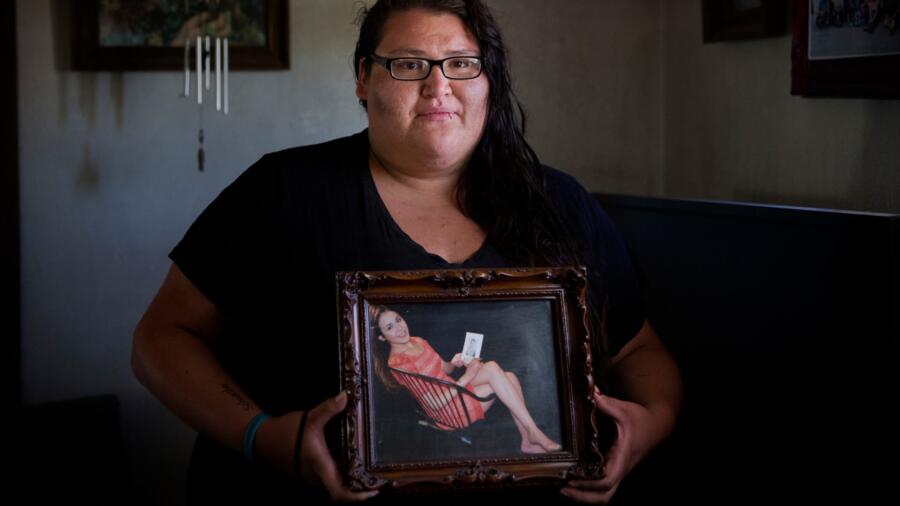In June 2017, 20-year-old Ashley Loring HeavyRunner vanished from the Blackfeet Indian Reservation in Montana. Young, vibrant, and filled with dreams, Ashley became one of the thousands of Indigenous women who have gone missing across North America—with few answers, limited media attention, and a justice system that repeatedly fails their families.
What happened to Ashley is more than just a mystery—it’s a glaring example of the systemic neglect and jurisdictional chaos that surrounds missing Indigenous women cases in the United States.
A Sister’s Intuition Ignored
When Ashley’s sister, Kimberly Loring, realized no one had heard from Ashley for several days, alarm bells rang. But when she reported Ashley missing, the response from law enforcement was chillingly indifferent.
“She’s an adult,” they said.
“Maybe she just doesn’t want to be found.”
Kimberly knew better. Ashley wasn’t just a missing person—she was someone in immediate danger. Her disappearance wasn’t just a fluke. It was a symptom of a broken system, one that has too often dismissed the fears of Indigenous families.
Missed Clues, Misplaced Evidence
On June 5, 2017, Ashley was last seen at a house party on the reservation. Days later, a disturbing tip surfaced: a woman matching Ashley’s description had been seen running from a car along U.S. Highway 89. No one followed up on the lead for weeks.
The real heartbreak came when Kimberly herself found Ashley’s boots and a sweater near that same stretch of highway—items she believed belonged to her sister. They were stained, possibly with blood.
These items were turned over to authorities—but were mishandled and left untested for months. When investigators finally retrieved them, the trail had gone cold.
A Legal System Designed to Fail
Ashley’s case highlights a truth that Indigenous communities know all too well: jurisdictional red tape often ensures justice is delayed—if not denied entirely.
Because tribal nations cannot prosecute non-Native perpetrators of crimes committed on reservations (thanks to the 1978 Oliphant v. Suquamish Supreme Court decision), many investigations stall before they ever begin. If federal agencies decline to pursue a case, tribal police are left powerless.
“It creates a legal black hole,” says legal scholar Jordan Gross.
“Non-Native offenders know they’re untouchable on tribal land.”
This loophole is one reason why murder rates for Indigenous women are up to 10 times higher than the national average in some counties. And why so many cases—like Ashley’s—remain unsolved.
Suspicious Figures, No Accountability
One name that keeps surfacing in Ashley’s case is Sam McDonald, who claimed to have spent time with her days after the party. He said he dropped her off to meet another man—Paul “V-Dog” Valenzuela, a known felon.
Ashley was never seen again.
Despite being named in connection with her disappearance, neither man has been charged. Her family continues to push for answers, but silence and slow-walked investigations have become their norm.
A Sister Becomes a Warrior for Justice
Unwilling to let her sister’s story fade, Kimberly Loring HeavyRunner has become one of the most vocal advocates for Missing and Murdered Indigenous Women and Girls (MMIWG).
In 2018, she took Ashley’s case to Capitol Hill, standing before Congress and sharing her pain:
“From the very beginning, both Blackfeet Law Enforcement and the BIA ignored the dire situation Ashley was in. They dismissed us.”
Her words sparked national attention—but still, no breakthrough.
The Tip of a Much Larger Crisis
Ashley’s story is sadly far from unique.
According to the National Crime Information Center, over 5,000 Indigenous women were reported missing in 2020 alone. The true number is likely much higher, due to underreporting, poor data collection, and systemic racism.
Despite the creation of Operation Lady Justice and Savanna’s Act, families and activists say little has changed on the ground. Resources are still scarce. Communication between tribal and federal agencies is fragmented. And most importantly, the women remain missing.
A Promise Unkept—But Not Forgotten
As of today, Ashley Loring HeavyRunner is still missing.
Her family still leaves an empty seat at gatherings. They still search the land, hand out flyers, and share her story. They cling to hope—but also to fury.
Because Ashley’s case isn’t just about one young woman who vanished. It’s about the countless Indigenous daughters, sisters, and mothers who go missing every year, and the silent crisis that the U.S. still refuses to fully acknowledge.
If You Know Something—Speak
Ashley was last seen in Browning, Montana, on or around June 5, 2017. She is 5’2”, 90 lbs, with dark brown hair and brown eyes. She would be 26 years old today.
If you have any information, contact:
- FBI Salt Lake City Field Office: (801) 579-1400
- Bureau of Indian Affairs Tip Line: 1-833-560-2065
- Submit a tip at fbi.gov
Final Words: Indigenous Women Deserve More Than Silence
Ashley Loring HeavyRunner had hopes, dreams, and a future. She wasn’t just a name on a missing persons list—she was someone deeply loved, and someone whose story deserves to be told.
Until there is justice—for Ashley, for her family, and for every Indigenous woman silenced by this system—the fight must go on.

